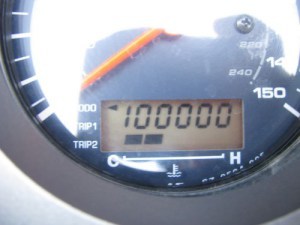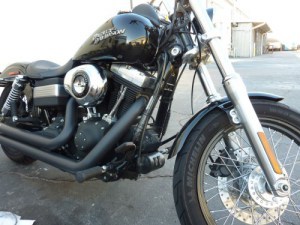L.V. Sage's Blog, page 5
November 24, 2015
Old Towne Orange and Irvine Park
Orange County is known for our miles of beautiful coastline and beaches, but there’s also a lot to see inland as well.
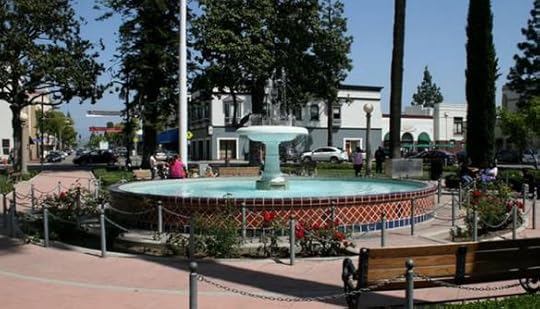
Old Towne Orange is a great place to explore and it is only ten miles from EagleRider Newport Beach via CA-55N to Chapman Ave.
In the “Orange Circle” and up and down Glassell Ave., you will find plenty of antique malls, unique shops and lots of great restaurants and the surrounding streets are overflowing with beautiful historical homes.
Getting lost in nostalgia is easy in Old Towne Orange. It’s fun to get lost in the huge antique and consignment malls that feature all sorts of treasures from old Life magazines to record albums, comic books, jewelry, dishware, furniture, action figures and anything else you can dream up.
If you’re into 1950’s and 60’s mid-century furniture don’t miss a visit to Woody’s. Bret and Bettie Woody have an impressive collection of mid-century Danish and Heyfield Wakeman furniture for sale and can tell you anything you need to know about it.
Next door is the famous Watson’s Drug Store and Soda Fountain where you can literally step back in time and enjoy an old-fashioned hamburger lunch complete with malt or float while listening to the 1950’s jukebox.
There are lots of specialty shops in Orange that are great fun to browse. Mr. C’s Rare Records is a favorite. The selection is great here, but the prices are a bit steep. Nearby is Big Red Comics where you can find toys, games and action figures in addition to the comic books. I also recommend a stop at the Army Navy Store where you’ll find lots of great camping equipment as well as pins, patches, bumper stickers, clothing, foot ware and a selection of knives and guns.
If you want to try some of the best Cuban food in town, head over to Felix’s Continental Café. Their portions are huge and you can sit outside or in. Other great places to eat are Gabbi’s Mexican Kitchen, Citrus City Grille and Bruxie’s. If you’re a vegetarian, there’s a couple of amazing places to eat. Try Rutabegorz with its laid-back, hippie vibe or Mead’s Green Door, which features a local artists’ gallery. Next door to Mead’s is a great sausage and beer joint called Linx.
If you take E. Chapman Ave all the way to Jamboree Rd, you’ll end up running into Irvine Regional Park in Santiago Canyon. This is a beautiful and sprawling park, complete with a small zoo, train rides, paddle boat rentals, horseback riding, picnic grounds and hiking trails. Well worth the extra few minute drive from Old Towne Orange.
To get back to EagleRider Newport Beach, take Jamboree to CA-405N to CA-55S, then exit at Baker St.
Filed under: Blog Posts From Other Sites, Media, Uncategorized Tagged: bikers, california, motorcycle rides, motorcycles


November 17, 2015
Day Trip: Julian and Cuyamaca
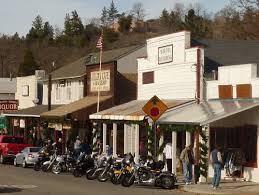
One of the more popular destination rides in Southern California is to the Old West mountain town of Julian. Most motorcyclists know about this location, which is reached by way of the freeway and then some very easy and scenic road riding.
Julian is about a two hour drive from EagleRider Newport Beach. After picking up your rental bike, head south via CA-73 to I-5S. In approximately 70 miles, you’ll reach CA-78 toward Escondido.
Following the 78 can be a bit tricky as it often takes you through small towns and on surface streets before actually becoming a road again, but follow the signs and you’ll have no problems.
On your left, you will pass the San Diego Wild Animal Park; farther on the road climbs into the foothills and offers nice views of rolling hills and in springtime, green grass and wildflowers. Once you reach the equestrian town of Ramona, you’ll begin to head up into the Cleveland National Forest. The road can be quite populated with both car and motorcycle traffic, especially in the fall, when apple season is in full swing. For the most part, this is a nice, curving, mountainous road and the beautiful pine and oak trees and clear blue skies make for a perfect ride.
Once you hit Julian proper, turn right on Main Street and park. You’ll see plenty of other motorcycles parked along the street as well as a horse and carriage that you can take a ride in.
Julian was founded around 1851, but its first claim to fame came when former slave A.E. “Fred” Coleman discovered gold in a creek in 1869. Some four years later, James Madison brought a load of young apple trees to town and they flourished, resulting in Julian’s current local product. Don’t leave town without trying a piece of apple pie!
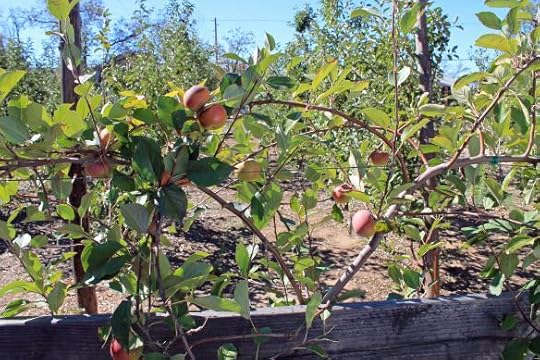
There is actually a motorcycle accessories shop in Julian called Hog Heaven (what else?), located at 2016 Main Street. They offer necessitates like thermal undergarments, gloves, clothing and cargo.
One place that is sort of off the beaten path, but worth a visit is the Julian Book House located at 2230 Main Street. A small, independent bookstore, they specialize in rare and used books. I have found many treasures among their shelves.
If you have time to explore, I recommend a visit to the Julian Pioneer Cemetery, located up a steep set of stairs at Farmer Road and A Street. Julian has a long Old West history and if you want to learn about it on your own instead of via the local museum (which is also good), wander among the crumbling headstones and grave markers here.
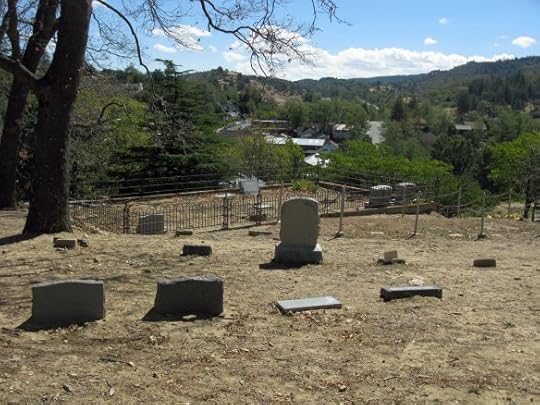
During apple season, several of the orchards offer “U-pick” tours where you can pick your own apples. Check with the individual orchards and ranches for details as some require appointments.
Julian has several wineries as well as hard cider and beer breweries that all offer tastings. Check each one for more details and remember alcohol impairs your ability to operate a motorcycle, so book a room if need be.
Of course there are plenty of good restaurants in town such as the Julian Café, Miner’s Diner, Mom’s Pies and Rongbranch Ranch where the fried pickles are a must!
However, if you want to see some more beautiful scenery and take a short drive, head southeast on Main Street and then turn right onto CA-79. About 8 miles down this peaceful country road, you’ll find Lake Cuyamaca Restaurant with beautiful views of Lake Cuyamaca from either the outside deck or dining room. They have a reasonably priced and varied menu and are open until 8:00 PM. Their address is 15027 Highway 79 in Julian.
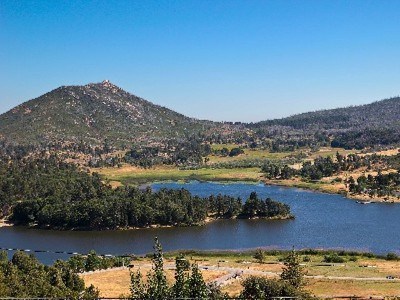
If you head south on the 79, you will pass by Cuyamaca State Park before merging onto I-8 W toward San Diego. Take CA-67N to CA-52W, which will hook you up with the I-805N. This will become I-5N. From here, you can hop back onto CA-73N to CA-55N to return your rental bike at EagleRider Newport Beach. This route creates a sort of loop, but you can certainly just go back the way you came up.
Fall is the perfect time to visit Julian, so plan a trip with friends and reserve your rental bikes from EagleRider Newport Beach today.
Filed under: Media, Uncategorized Tagged: bikers, california, motorcycle rides, motorcycles


Ride to Hell’s Kitchen & Cook’s Corner
Yeah, I know: this is a very popular and somewhat clichéd ride, but if you are visiting Orange County/Southern California, you kinda have to do this one. I don’t call this one a “Day Trip” as it is just too short, but it makes for a nice afternoon run.
From the parking lot of EagleRider Newport Beach, get onto CA-73 and then head south on I-5 toward San Diego. Exit at CA-74 in San Juan Capistrano and turn left, following the famous highway for approximately twenty-two miles.
Highway 74 , or Ortega Hwy, has a bad-ass reputation, even inspiring bumper stickers that read “I Survived Highway 74”. This is mostly because of the amount of four-wheel traffic and/or sport bike riders who get going around the curves a little too fast.
That aside, Hwy 74 is no slouch in the way of fun twists and turns, steep climbs and a few 180 degree turn as well as some spectacular scenery including Lake Elsinore and Mt. Elsinore and the valley below.
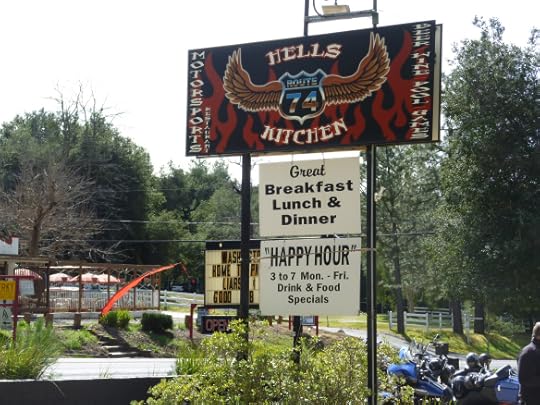
Once you reach Lake Elsinore, Hell’s Kitchen will be on your left. You’ll likely be in good biker company here and although it has a reputation as more of a Harley or cruiser destination, many sport or dual sport bikes stop here as well. Many group rides make Hell’s Kitchen their destination, so you’ll be able to meet riders from all over Southern California.
The weekends are bustling here, so expect a crowd if you go out on a Saturday or Sunday. There is seating inside, out front and out back, which is my favorite place. There’s a nice deck with picnic tables shaded by the beautiful big oak trees.
Hell’s Kitchen offers a full bar, a typical roadhouse-style menu, big screen T.V.s and pool tables; however, the one item you’ll not want to miss (and are not likely to anyway) is their Coffin Condiment Bar.
While the service can be hit and miss (long wait time is the main complaint), their food portions are very generous and the food is decent enough. Worth a stop for sure.
If you choose to head over to Cook’s Corner in Trabuco Canyon, you’ll realize that this ride isn’t a loop. Because the ride up Ortega Hwy (Hwy 74) isn’t a long one, I thought I’d throw Cook’s in as a second and popular biker destination in the general area.
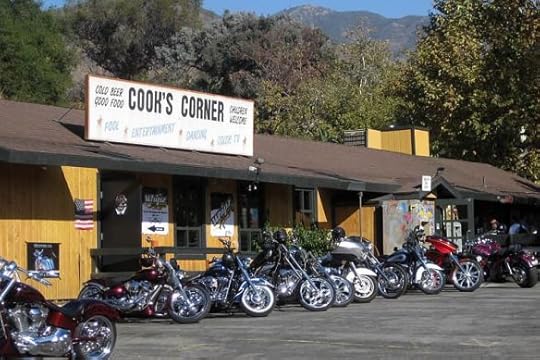
Head southwest on Hwy 74 for about twenty miles and then turn right onto Antonio Pkwy, then right on Oso Pkwy. Turn left onto CA-241N for a few miles and then exit at Portola Pkwy. Keep right and then make your first right onto Glen Ranch Rd, then your fist left at Saddleback Ranch Rd. At Ridgeline Rd turn left again and then left at Santiago Canyon Rd. Cook’s is on your left.
We rode up from Orange County for lunch on a Friday, arriving around 11:00-11:30. The place is what would be classified (lovingly) as a dive bar-small, rustic with cheap bar food (burgers, burritos, tacos, fries, etc). They have tables and benches out front, which is typically where we sit. As you would expect, many motorcycles of all kinds are parked outside, but the crowd is sometimes mixed with bicyclists and scooter aficionados.
Cook’s has always had live music and still do so check their website for details. They also have a Bike Night every Wednesday (as well as a $4.00 spaghetti dinner complete with garlic bread and salad). Saturday and Sunday they have a Bike Wash, beginning at 7:00 AM and going all the way until 6:00 PM.
Getting back to EagleRider Newport Beach is easy from here. Just go back the way you came and then go down Bake Pkwy to the 405N and then merge onto the 55S.
Filed under: Media, Uncategorized Tagged: bikers, california, motorcycle rides, motorcycles


Riding in a Group
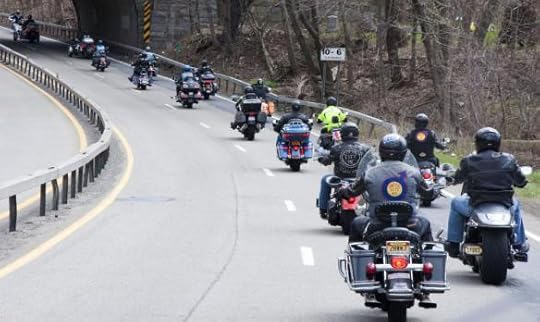
We’ve all seen it: a group of motorcycles gracefully wending their way down a highway or country road, but do you know just how much practice, coordination and planning go into group riding?
Cruising along a nice open road or even getting to that road via the freeway, riding solo is usually how we do it. But part of the reason that we ride is for the camaraderie of other riders who know the joys of the experiences we have out on the road.
Unfortunately, many riders are woefully unequipped to ride in a group. Simply calling a few of your buddies and taking to the open road can cause all kinds of unforeseen problems. There are many variants within any group and with motorcyclists these include skill levels, experience and types of bikes.
Before heading out with a group of riders, the first thing you should do is hold a meeting to discuss location, road conditions, skill levels, destination, stops and what to do should a rider become separated or lost. A rider with a good skill level should be chosen as a leader and there should be another skilled rider near the back of the pack to watch those less experienced in case they need assistance.
Remember that motorcycle club that you saw riding in a tight formation down the road? Well, clubs, whether they are the Hells Angels or the Disciples Christian Motorcycle Club, have a strict formation that they adhere to when riding in a group. Riders always maintain a staggered formation meaning that two riders are alongside one another in the lane, but one is a bit forward, the other behind. Depending on the number of members, it will usually go something like this:
Road Captain and President
Sgt. at Arms and Vice President
Patch Holders in groups of two
Prospects in groups of two
Friends of the club in groups of two
Some clubs have Assistant Road Captains who fall behind the other riders.
You can see that this group can potentially be very large, but remember that these riders are at an expert level. Ideally, your group should not exceed ten riders and while you are not likely to have an Executive Board with a President, Vice President, etc., one position that warrants looking into is that of the Road Captain.
The role of the Road Captain in a motorcycle club is that of “leader of the pack”. The responsibilities of this position include mapping the route to be taken, where the group will stop and when, riding in the lead position and enforcing group riding rules and formation. The Road Captain is usually a very experienced rider and he sets the pace of the ride and makes on-the-road decisions such as when to pass a vehicle or avoid an obstacle. The Road Captain communicates these instructions to the rest of the group through hand signals, which are universal in the motorcycle riding world.
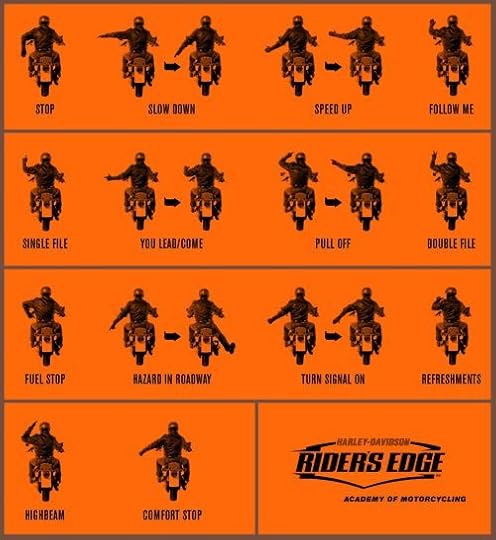
You can see the importance of having a competent leader for your group ride, so choose someone who can handle the job well.
Once you have chosen your lead rider, you’ll need to place the others in formation according to skill. Behind the leader should come the least experienced riders who can then be followed by more skillful ones.
All riders should arrive prepared meaning cell phones fully charged and tanks full of gas. Riders should have inspected their bikes beforehand and checked tire pressure, oil levels, etc. beforehand. Someone should also carry a first aid kit and some basic tools should a rider need a quick and easy repair.
Be sure that you don’t have any show-offs or rogue riders in your group that can endanger the rest if they decide to zoom out of formation on their own. Should it be necessary for the group to pass, it should be done in single file. Also, be sure and take plenty of breaks, especially if your pack is new to riding in a group and/or you have some less experienced riders.
There are several experienced riders at EagleRider Newport Beach who can help you plan your group ride, rent you or your friends some motorcycles and give you plenty of helpful tips and pointers to make sure your ride is safe, comfortable and most of all fun!
Filed under: Media, Uncategorized Tagged: bikers, california, motorcycle rides, motorcycle safety, motorcycles


Washing and Detailing Your Bike
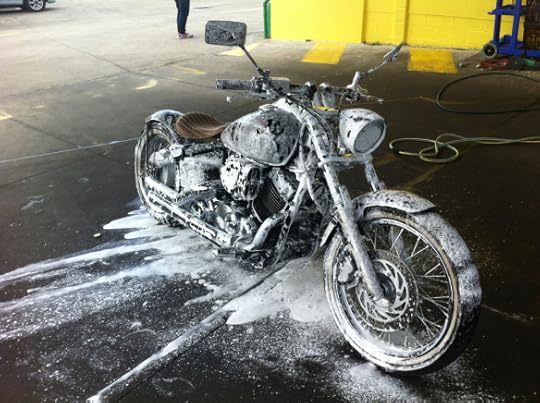
Washing and waxing your motorcycle probably isn’t one of your favorite activities, but keeping up with it not only makes you and your motorcycle look great, but has several other benefits as well.
By keeping you bike clean and free of dirt, residue, oil, grime, grease, etc. will maintain not only the integrity of its beauty, but decrease its devaluation. Also, dirt, dust and residue can affect your bike’s performance by clogging up parts and lines.
At OC Motorcycle, they only use one specific product for washing and detailing not only their on-site bikes, but their customers’ bikes as well. MA-FRA Daytona Shampoo, which is manufactured in Italy, is a multi-purpose, organic, non-acid shampoo and wax in one.
MA-FRA is safe for the environment and safe for your motorcycle’s paint, wax and parts as acid-based products can reduce the value of your bike over time by damaging the paint, sealant, wax and chrome. This product will also keep your wheels free from collecting brake dust and other contaminates.
OC Motorcycle will wash and wax your bike by hand very carefully and thoroughly before rinsing it with soft water only that will eliminate water spots that can be left behind with hard water.
MA-FRA products can be purchased right next door to OC Motorcycle at Weiss Auto Care. Stop by and take a look at the line and talk to business owner and car detailing specialist Rafiq, who is a longtime user of MA-FRA, the only products he uses and with great results.
Make an appointment at OC Motorcycle and have the professionals detail your bike for you. Just like with any cleaning job, it’s always preferable to have some someone else do it!
Filed under: Media, Uncategorized Tagged: bikers, california, motorcycle maintenance, motorcycles


The Importance of Proper Riding Gear
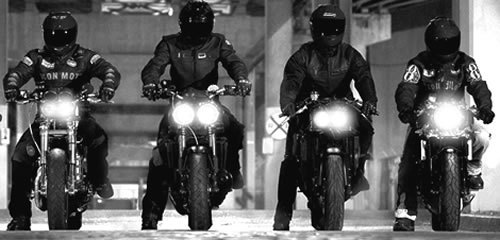
Investing in good quality, proper riding gear can literally save your skin. I can’t help but shake my head when I see some guy fly by on the freeway in shorts, a tank top and flip flops-seriously? On average, you’ll lose 1mm of flesh for 1MPH that you’re traveling over 30MPH when you hit the asphalt. What do you think this guy is gonna look like at 85MPH?
Riding gear can be a daunting subject because of the cost and just how much of it is out there to choose from. A good way to narrow it down is to decide what type of riding you’re going to be doing and in what type of road and weather conditions and then go from there.
At minimum, you’ll need a good helmet, jacket, boots, gloves and eye protection whether that’s from a full-face helmet or goggles or glasses. Off-road and racing require more specialized gear, but if you’re riding on the roads, streets and highways, the aforementioned gear will suffice.
When choosing a helmet, you’ll want it to fit snugly, but not too tight. To test the fit, grasp the chin and move the helmet from side to side while resisting the movement with your head. You shouldn’t feel your scalp rotating independently from the helmet. Don’t be shy about trying on as many helmets as you need to until you find one that fits properly. This is your brain we’re talking about, so choose wisely. You’ll want a helmet that is at least DOT approved, but for the best protection, look for an ECE 22.05-rated one.
If you choose a helmet without a face guard, keep in mind that 45% of all impacts to motorcycle helmets occur to the facial area, so you may want to reconsider that skid lid or at least look into some good riding goggles for a bit more protection.
Remember also that even if you are in a minor accident, your helmet has probably sustained some unseen structural damage and will need to be replaced. If you avoid an accident, the average life for a helmet is around six years.
The next most important riding gear pieces that you’ll need are gloves and boots. Your hands and wrists are very fragile and will likely be your first line of contact with the road should you go down. Gloves need to secure tightly at the wrist and should have a retention strap to ensure that they will remain on your hands during a fall.
Riding boots may not be your thing, but you will at minimum need something that will properly support and protect fragile feet and ankle bones. A sturdy combat or work boot that is snug at the ankle should suffice.
Of course you’ll also need a good riding jacket. With textile, you will want to look for material that is well-ventilated and is super strong like Cordura. For leather, be sure and check the thickness and stitching.
At the very least, always wear jeans when riding if not a riding suit or riding pants. A pair of heavy-duty jeans with a Kevlar lining will provide good protection; a pair of plain Levi’s will not.
The best overall protection is a two-piece leather riding suit as it is safe and versatile and will likely last a very long time, but if you invest in good quality components you can stay safe without the heat that can be an issue with the suits.
Other additional items to consider are earplugs, which can prevent permanent hearing loss; a tinted visor (versus sunglasses, but remember that you’ll also need a clear one for nighttime use) and a good silk or textile scarf for cold weather to keep your head and neck warm.
Talk to the guys at OC Motorcycle for advice on riding gear. Let them know what type of motorcycle you’re considering buying and what type of riding you’ll be doing. From there, they can help you choose the right gear for the best comfort and protection for your specific needs.
Filed under: Media, Uncategorized Tagged: bikers, california, motorcycle gear, motorcycles


Collision Repair
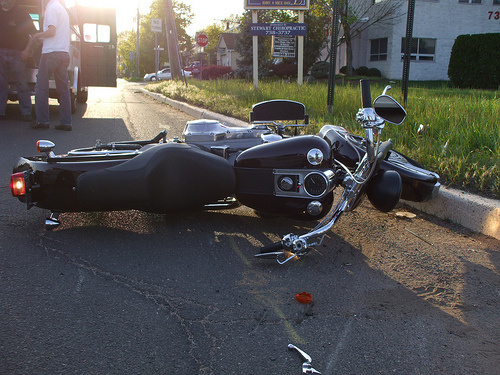
Well, it’s happened. That old motorcycle riding adage spoken by all seasoned riders has finally hit home: “There are only two kinds of riders-the ones that have had an accident and the ones that will”.
I remember my two accidents very well. Both were at low speed and both did not involve another vehicle of any kind. You might think that not much damage could be in in these situations, but you’d be wrong. My brand new Harley Sportster needed a lot of not just cosmetic work, but repairs to make it ride-able again.
The first thing to do is lick your wounds, make sure you’re okay (on the second accident, I suffered “water on the knee” and was on disability for 4 weeks) and then find a motorcycle repair shop that can do collision work.
OC Motorcycle has experience with collision repair work and can help you get your bike road-ready again. There is bound to be some feelings of failure or sadness whenever you “lay your bike down”, especially if it is your own fault, but the great people at OC Motorcycle understand this and will not make you feel any worse because you had a fall. I know I was pretty devastated, mostly about the damage that had been done to my bike.
Discuss with your mechanic what repairs need to be done in order to get the bike up and running safely again first and then talk about the cosmetic work, which many times can dealt with simultaneously.
Once you’re feeling better about things, this may also be a perfect time for you to consider doing some customizing or modifications since the bike needs work anyway. Changing a few things on your bike after an accident is a good way to help you put the past behind you and move forward and some modifications can actually help you to avoid an accident in the future. Maybe your seat wasn’t the most comfortable one for you or the controls should have been moved forward. The handlebars might work better if they were drag bars or the grips might need extra surfacing for better traction.
The best thing you can do after an accident is dust yourself off and get back in the saddle. Making an appointment at OC Motorcycle to discuss what needs to be done to your baby will go a long way toward making that a reality.
Filed under: Media, Uncategorized Tagged: bikers, california, motorcycle safety, motorcycles


Sequel to “Red, White & Blues” Now in Rewrite & Edit Phase Or “The Agony and the Ecstacy of Editing, Part Four”
My last post on this subject was way back in June. Sadly, I don’t have much to report at this stage as my reader hasn’t finished the manuscript yet and so we cannot discuss all the possible edits and changes that need to take place.
So what does an author do while twiddling their thumbs waiting? Start a THIRD book, of course! Yes, it’s crazy. I had intended for “Red, White & Blues” to be a stand alone story, but having created such a huge cast of characters and because there was so much more of the timeline to cover (since it ended in 1977), I went ahead and wrote a sequel. Two, I thought, would end it. Once I began the third part in what could potentially turn into a trilogy, I thought that it could work. Then again, it might not.
Writing a sequel seemed logical. Many readers told me that they became so attached to the characters that ending the book was a bit sad for them as they realized that they would never know what became of them in the years that followed 1977. The second book focuses on the growing children of the main characters as well as dealing with the very scary beginnings of the AIDS epidemic in San Francisco in the 1980’s. While many of the characters are familiar, new ones are also introduced. Asher and James are a gay couple in the heart of the AIDS fight; a new love interest emerges for Maura and twins Salem (Nick) and Alex Lund become closer as they face a dark and dangerous threat to one of their own.
This third installment is going painstakingly slow, so I am not sure where it will end up (in the recycle bin? as a new manuscript?). I can only admit that I am hopelessly addicted to my characters and their lives and if I don’t write about them, I feel lost. We writers are a very strange lot indeed.
Filed under: Uncategorized Tagged: editing, fiction, red white & blues, writing


November 13, 2015
Motorcycle Maintenance: 20,000 Miles & Beyond
I have a friend who has a 1984 FXST Harley-Davidson. “Ol’ Blue” has been rolling down Southern California’s highways and back roads for over thirty years now and that is a testament to my friend’s dedication and continued maintenance.
A motorcycle that is well-maintained never dies. In fact, because it is a machine, it can potentially outlive its owner. You should be able to perform some of the services on your bike yourself by now such as oil and filter, spark plug and air filter changes if not much more.
When your bike rolls up on 20,000 miles, chances are that you have owned it for at least two years. Since you’ve been diligent about its maintenance, you will know most of what should be done at this point. In addition to what I already mentioned above, you’ll also need to change the wheel bearings, brake and clutch fluid and coolant as well as repack the steering stem and pivot arm bearings. Other than these basic services, it is now time to simply restart the maintenance schedule all over again from the beginning. Just set up a schedule that is convenient for you to keep up on the maintenance that you have already been doing over the years by perhaps making annual or semi-annual appointments with OC Motorcycle like you would with your dentist. Diligence is the key now.
At some point, you will want to replace the fork oil, seals and bushings and then a bit farther down the road, say around 40,000 miles or after 48 months, you’ll need to start replacing worn parts. Always refer to your bike’s manual for the correct parts and never replace worn or damaged parts with used ones, which can make your bike dangerous to ride. Replacing clutch and brake lines, radiator hoses and cables should be done at this time.
Ongoing inspections of the electrical connections, brakes and brake pads and tires should be routine now. Remember that if you are not comfortable or are unsure about a service, part or repair you should contact a specifically trained mechanic like the ones at OC Motorcycle to do the work. Having the repairs and maintenance done correctly and in a timely manner is paramount and sometimes finding the time to keep up on it all yourself can be daunting.
If you are vigilant and conscientious about your bike’s well-being, it is very likely that you’ll have a lifelong road buddy like “Ol’ Blue”, who has over a quarter of a million miles on her!
Filed under: Media Tagged: bikers, california, motorcycle maintenance


Motorcycle Maintenance: 15,000 Miles
At approximately the 15,000 mile marker (or 18 months), your motorcycle will be ready for another service. If you’ve been diligent about your previous services, this one will be a breeze, but there may be a few extra things that will need to be inspected at this point, depending on your bike’s usage and care.
Of course the oil will need to be changed, but the filter is optional this time. The mechanics at OC Motorcycle will be able to tell you whether the filter is dirty or worn enough to warrant replacing.
All of the standard cables, chain (if applicable), brake and clutch levers, etc will need to be lubricated and inspected. Again, everything that looked over at your last two services will be repeated: fuel and exhaust systems; the cooling, brake and clutch systems; the air filter, cables, lights and signals, carburetor, forks and battery will all be checked over very carefully. During these inspections, parts will be cleaned, tightened or adjusted and worn out parts replaced.
The one important addition to the inspection at this mile marker is your EVAP (Evaporative Emissions System) system, which was designed and implemented to prevent gasoline vapors from escaping into the air. Here in California, all new Harley-Davidsons have been fitted with a fuel vapor canister to help keep emissions low, but motorcycles purchased outside the state of California do not have this canister.
Talk to your mechanic at OC Motorcycle about any questions or concerns that you may have regarding the fuel vapor canister or anything else that you may be uncertain about. If you haven’t already, this is also a good time to think about perhaps customizing your bike to make it more pleasing aesthetically as well as in form and function. OC Motorcycle can help you in this arena as well, so call to make an appointment soon!
Filed under: Media Tagged: bikers, california, motorcycle maintenance



